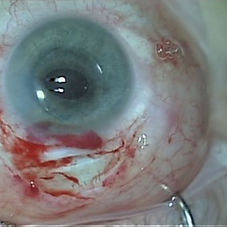Lens Reconstruction
Eye Conditions
Cataract
CSCR
Diabetic Retinopathy
Epiretinal Membrane
Flashes and Floaters
Glaucoma
Macular Degeneration
Macular Hole
Retinal Detachment
Retinal Vein Occlusion
Uveitis
Vitreomacular Traction
Investigations
Procedures



Dislocated lens is removed and anterior chamber lens inserted
If the natural lens has dislocated, it usually needs to be removed and an artificial lens inserted in its place. This is like cataract surgery except the surgery will be more challenging and the placement of the artificial lens needs to be planned carefully. It may still be possible to insert the artificial lens into the capsule but the capsule may need additional fixation to the eye wall or the iris to ensure stability. If the capsule support is poor or absent, the lens may need to be placed in front of the capsule, stitched to the sclera, clipped to the iris, or in the anterior chamber. If the lens has completely dislocated into the vitreous, vitrectomy is required.
The natural or artificial lens can become unstable and dislodged from its desired position. This will impair proper focus and result in blurring of vision. The instability is most commonly due to weakening of the zonules, which are fine fibres that connect the lens capsule to the ciliary body, holding the lens suspended behind the iris. Conditions such as Marfan's syndrome and pseudoexfoliation, trauma, mature cataract or simply aging can lead to weakening of the zonules.
Warning: Clinical surgical footage.
Removal of dislocated intraocular lens and suturing of new lens
Dislocation of the artificial lens is managed in a similar manner. It may be possible to reposition the dislocated lens behind the iris and fix it to the sclera. Otherwise, the dislocated lens is removed and replaced with a new artificial lens. Vitrectomy is usually needed to complete this surgery safely.
Lens reconstruction surgery can be difficult to perform and often requires large wounds to be made. The wounds can be constructed in a special way that provides good stability without relying on numerous stitches that can warp the shape of the eye. Your surgeon will discuss various aspects of the surgery carefully before the surgery.